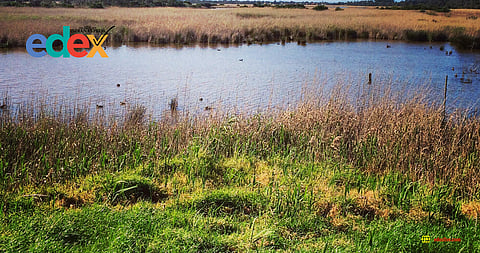

Delhi’s once-thriving wetlands are fast disappearing. A new study by Delhi University, along with private firms including HCLTech, and Terna Global Business School, shows that the capital has lost nearly nine per cent of these crucial ecosystems over the last three decades- a decline driven largely by relentless construction and surging population growth.
Severe losses in key districts
Some districts, including South Delhi, have seen a drop of almost 97 per cent in their wetland area, the study also found. Published in the journal Research in Ecology in June 2025, the study examined satellite data from 1991, 2001, 2011 and 2021 to track how water bodies have changed over time.
Overall shrinkage and urban expansion
Researchers, including a Delhi University student named Grinedge Yadav from the department of continuing education, said the total wetland area in the national capital fell by around nine per cent from 32.9 square kilometres in 2000 to 30.2 sq km in 2022.
During the same period, the city’s built-up area grew from 485.6 sq km to 825.6 sq km, an increase of more than 70 per cent. The study said the expansion of residential colonies, roads and industries had led to the steady loss of natural water systems. Wetlands, which once helped recharge groundwater and store rainwater, are now being reclaimed or polluted.
East Delhi also recorded a major fall, from 0.39 per cent to 0.016 per cent, while North Delhi dropped from 0.27 per cent to 0.001 percent.
Meanwhile, Central Delhi managed to retain most of its water bodies, falling only slightly from 3.72 per cent to 3.26 per cent, helped by its proximity to the Yamuna River and government-protected zones. North East Delhi also maintained better coverage due to its floodplains and conservation work, it said.
The study found that South West Delhi, home to the Najafgarh wetland system, lost more than 90 per cent of its wetland area between 2001 and 2021.
